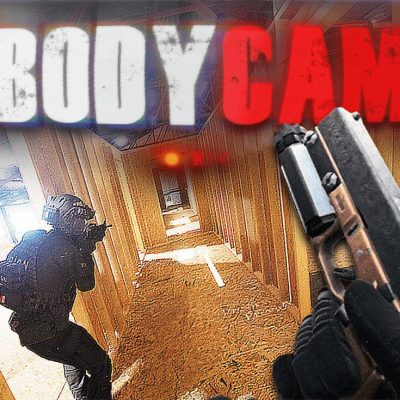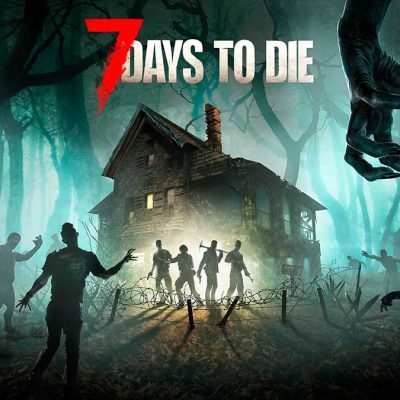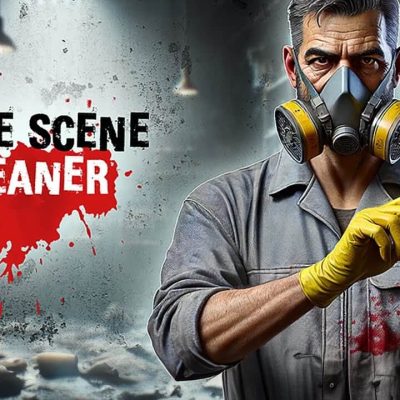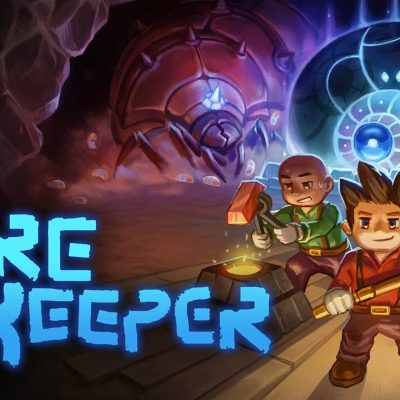When discussing survival games, few titles have captured the enduring interest of gamers quite like 7 Days to Die. Developed and published by The Fun Pimps, this game stands as a unique blend of multiple genres—survival horror, RPG, crafting, and tower defense—set within a post-apocalyptic zombie-infested world. Since its initial early access release in 2013, 7 Days to Die has gained a dedicated following thanks to its deep mechanics and customizable gameplay. This review delves into every major aspect of the game, evaluating its features, strengths, and weaknesses.
Overview and Core Concept
At its heart, 7 Days to Die is a sandbox survival game that challenges players to survive as long as possible in a harsh, zombie-infested world. The core twist of the game lies in its titular cycle: every seven in-game days, players face a blood moon night, during which hordes of powerful and relentless zombies swarm the player’s location. This cyclical escalation of difficulty drives the need for constant preparation, fortification, and strategy.
Gameplay Mechanics
1. Crafting System
The crafting system in 7 Days to Die is one of its most expansive features. Players can gather a wide range of resources, from basic materials like wood and stone to rare components like electrical parts and polymers. Crafting is divided into several categories:
- Building Materials: Used for constructing and reinforcing structures.
- Weapons and Ammo: Players can craft rudimentary weapons such as bows and clubs or more advanced firearms.
- Survival Essentials: Items like campfires, cooking stations, and medical supplies are crucial for long-term survival.
The game’s crafting menu is highly detailed, providing recipes for everything from simple tools to elaborate traps. Unlocking more advanced recipes often requires leveling up specific skills or finding blueprints scattered throughout the world.
2. Skill Tree and Progression
Progression in 7 Days to Die is managed through a robust skill system. Players earn experience points (XP) by performing various tasks, such as killing zombies, harvesting resources, and completing quests. These points can be invested in different skill categories:
- Perception: Enhances ranged combat abilities and awareness.
- Strength: Improves melee combat and resource gathering.
- Fortitude: Focuses on stamina, health, and resilience.
- Intellect: Unlocks advanced crafting options, including robotics and electricity.
- Agility: Boosts stealth, movement, and precision.
The skill system allows for a high degree of customization, enabling players to specialize in different playstyles—whether they prefer brute force, stealth, or strategic defense.
3. Base Building and Defense
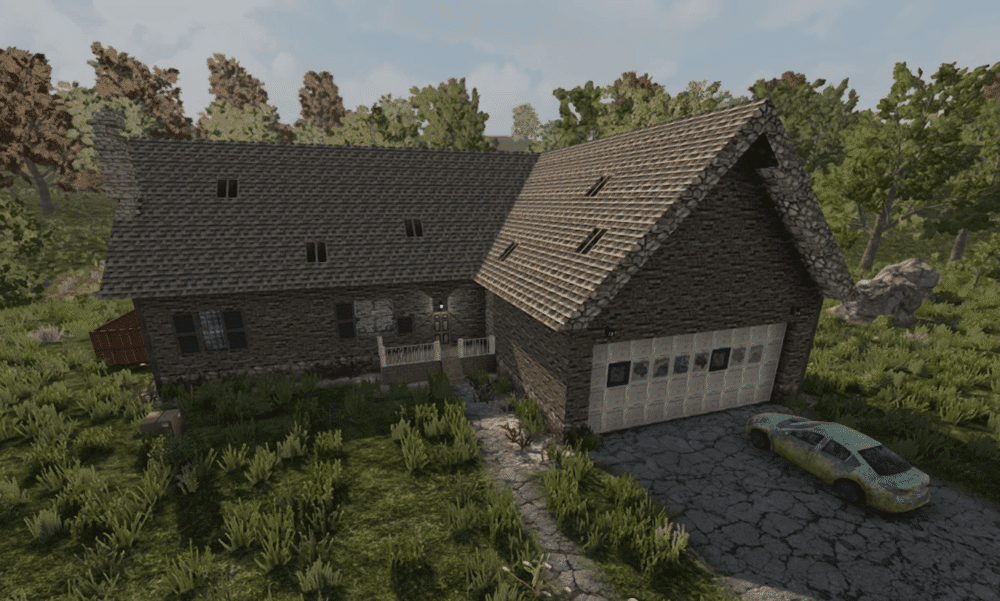
Base building is a cornerstone of 7 Days to Die. Players must construct and fortify their base to withstand the periodic zombie hordes. The game offers a wide variety of building materials, from wood and cobblestone to reinforced concrete and steel. Players can design their bases with defensive features such as:
- Spikes and Barbed Wire: To slow down and damage zombies.
- Electric Fences and Turrets: Automated defenses that can deal significant damage.
- Trapdoors and Escape Routes: To create strategic fallback points.
Base design is a game of strategy; players must balance aesthetics with functionality, ensuring that their structures can withstand both environmental hazards and relentless assaults.
4. Combat and Weapons
Combat in 7 Days to Die is dynamic, offering both ranged and melee options. The arsenal available to players includes:
- Primitive Weapons: Such as wooden clubs, bows, and spears.
- Firearms: Pistols, shotguns, assault rifles, and sniper rifles.
- Explosives: Grenades, molotov cocktails, and landmines.
Each weapon type has its strengths and weaknesses. Firearms provide significant firepower but are noisy, attracting more zombies. Melee weapons are quieter but riskier to use due to close-range combat.
The game’s hitbox and damage systems add a layer of realism to combat. For instance, headshots deal critical damage, while limb strikes can slow down enemies.
5. Exploration and Looting
Exploration is a key aspect of survival. The game world is procedurally generated, offering vast and varied landscapes that include:
- Urban Ruins: Filled with valuable loot but teeming with zombies.
- Wilderness Areas: Offering resources like wood, clay, and game animals.
- Underground Bunkers: Hidden locations that often contain high-tier loot.
Players must balance the risk and reward of venturing into dangerous areas, as looting key supplies is essential for survival.
6. Zombie AI and Horde Mechanics
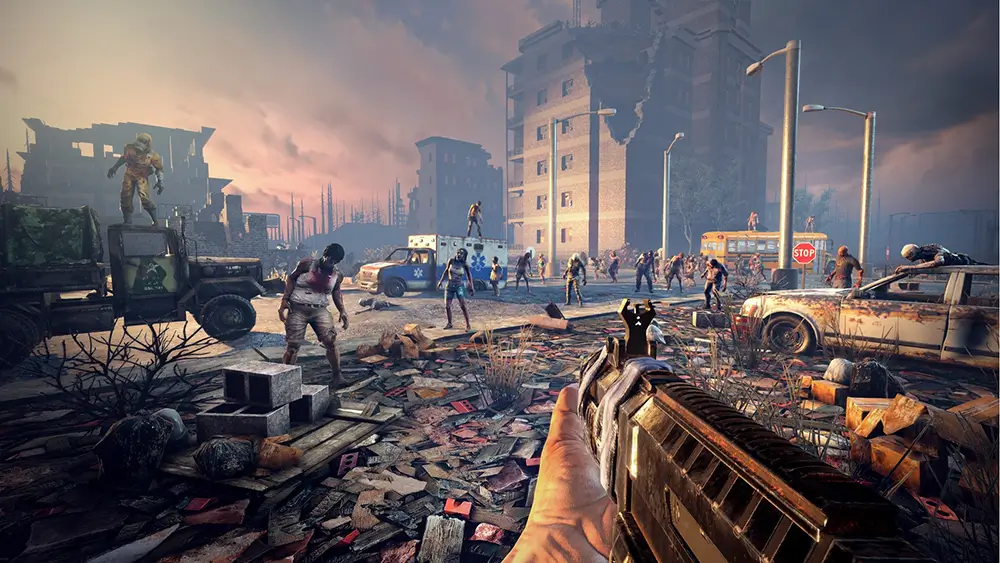
The zombie AI in 7 Days to Die is designed to be both unpredictable and relentless. Zombies can detect players through sight, sound, and smell. They are capable of:
- Breaking Through Walls: Zombies will target weak points in structures.
- Climbing and Digging: Advanced hordes can scale low walls and burrow through the ground.
- Adaptation: Blood moon hordes become progressively stronger with each passing week.
This adaptive AI ensures that players cannot rely on a single strategy for long, keeping the gameplay challenging.
7. Survival Elements
In addition to combat and crafting, 7 Days to Die introduces survival mechanics that players must manage:
- Hunger and Thirst: Players must hunt, scavenge, or grow food to avoid starvation and dehydration.
- Temperature: Extreme heat or cold can affect player stamina and health.
- Injuries and Diseases: Players can suffer broken bones, infections, and food poisoning, requiring medical supplies for treatment.
These elements make survival more immersive and demanding, encouraging players to plan ahead and adapt.
8. Multiplayer and Co-op
7 Days to Die supports both single-player and multiplayer modes. In multiplayer, players can:
- Form Alliances: Work together to build defenses and fend off hordes.
- PvP (Player vs. Player): Engage in combat with other players for dominance.
- Role Specialization: Players can divide tasks such as scavenging, crafting, and defense.
Multiplayer adds a layer of social dynamics, whether through cooperation or competition, significantly enhancing replay value.
Graphics and Sound Design
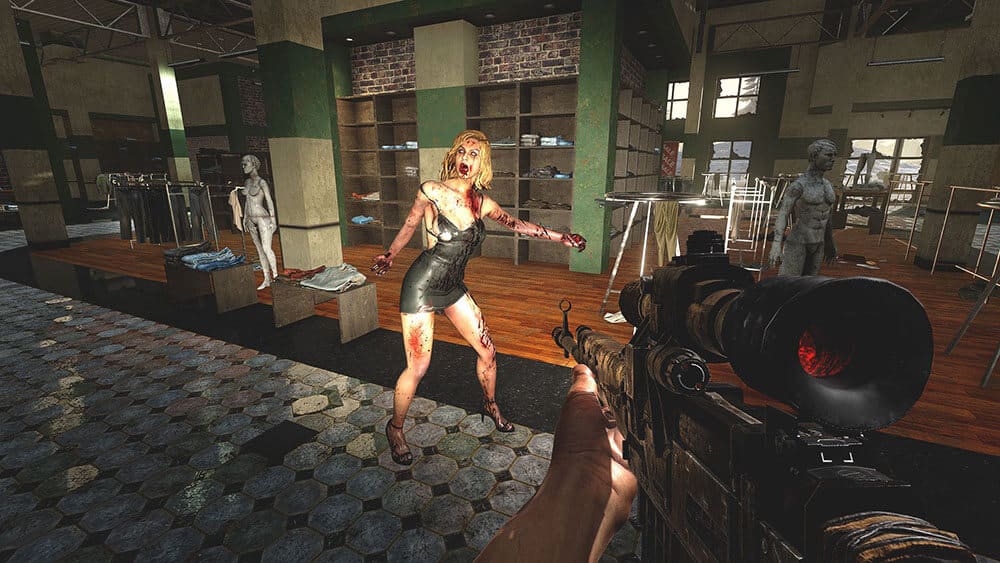
The graphics and sound design in 7 Days to Die play an essential role in creating its immersive survival experience, but they have received mixed reviews from the community.
Graphics
The visual presentation of the game effectively conveys the grim and desolate atmosphere of a post-apocalyptic world, but it also shows its age in some areas:
- Environmental Design: The landscapes are varied, with forests, deserts, snow biomes, and abandoned towns adding depth to exploration. The design of crumbling buildings and ruined cities reinforces the feeling of decay.
- Dynamic Lighting: The lighting system adds tension, especially at night or during blood moon events when the world is bathed in an ominous red hue. Shadows move realistically, adding to the suspense as you search for threats.
- Textures and Models: While the overall visual style supports the tone of the game, some textures and character models appear outdated compared to modern survival games. Zombies and NPCs have somewhat limited animations, which can feel repetitive over time.
- Weather Effects: Rainstorms, fog, and snow enhance the survival experience, making it feel as though the environment itself is a challenge. These effects also impact visibility, adding tactical considerations during exploration.
Sound Design
The audio elements are some of the strongest contributors to the game’s horror atmosphere:
- Ambient Sounds: The world is filled with eerie environmental sounds—from the distant groans of zombies to the creaking of abandoned structures. These sounds keep players on edge, even when no immediate threat is visible.
- Combat Audio: Each weapon has distinct sound effects, from the satisfying thud of a melee strike to the crack of a rifle shot. The louder the weapon, the more zombies you may attract, making sound a key tactical consideration.
- Zombie Sounds: The growls, roars, and footsteps of zombies are varied and spatially aware, allowing players to pinpoint approaching threats even before seeing them.
- Music and Cues: The absence of a constant soundtrack heightens tension, with musical cues reserved for key moments such as blood moon hordes or life-threatening situations.
Performance and Visual Customization
The game provides a variety of graphic settings that allow players to adjust visual fidelity and performance:
- Adjustable Graphics Options: Players can tweak shadows, textures, and draw distances to improve frame rates on lower-spec PCs.
- Performance Drawbacks: Despite the flexibility, some players report occasional frame drops and stutters, particularly during large horde attacks or in densely populated urban areas.
While 7 Days to Die may not boast cutting-edge graphics, its atmosphere-driven design and effective soundscape make up for its visual limitations. Together, the visuals and audio create a suspenseful, immersive experience that enhances the core survival gameplay.
Pros and Cons
Pros:
- Expansive crafting and building systems.
- Highly customizable skill tree and progression.
- Procedurally generated worlds for endless replayability.
- Engaging multiplayer and co-op modes.
- Intense and rewarding survival mechanics.
Cons:
- Outdated graphics compared to modern survival games.
- Occasional performance issues and bugs.
- Long-standing early access status may deter some players.
Final Verdict
7 Days to Die is a complex and rewarding survival game that excels in providing an immersive post-apocalyptic experience. Its combination of base building, exploration, combat, and survival elements offers players a unique blend of genres that few other games achieve. While it may not have the visual polish of newer titles, its depth and replayability make it a standout choice for fans of the survival genre.
For players who enjoy a challenge and the freedom to approach survival their own way, 7 Days to Die remains one of the most ambitious and engaging games in its genre.


